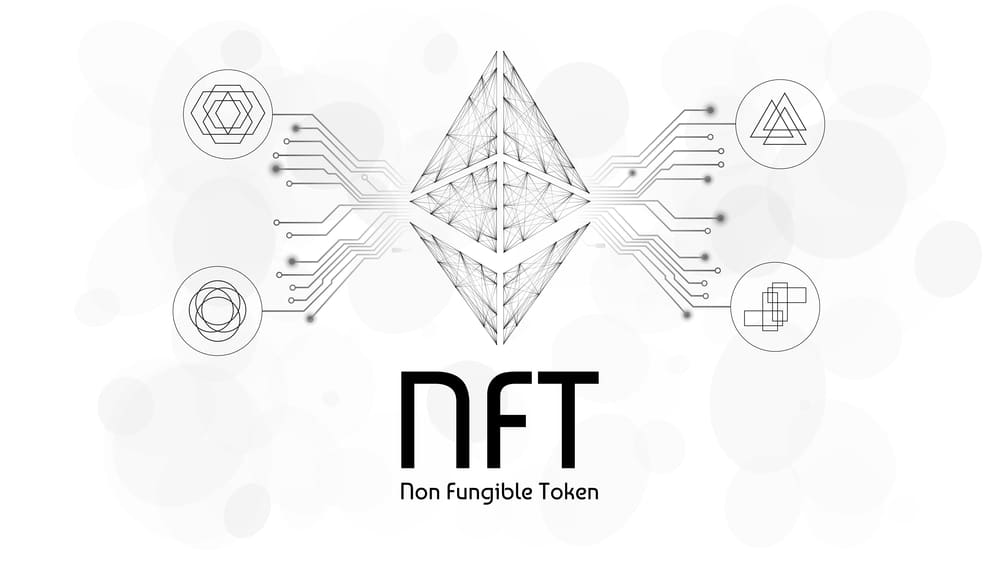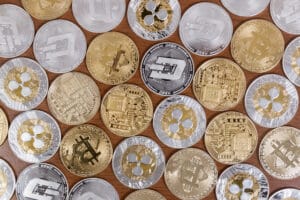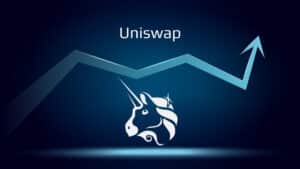What is all the craze about with NFTs? Non-fungible tokens aim to revolutionize the way people provide digital ownership of valuable things.
According to CryptoSlate, the NFT sector presently is worth an estimated $2.23 billion and dominates about 1% of the entire crypto market. 2021 seems to be an explosive year for this phenomenon as we saw increased tokenization of prevalent objects like collectibles and in-game items.
2017 was arguably the first time NFTs burst onto the scene thanks to the Ethereum-based CryptoKitties, a fun video game for trading, collecting, and breeding virtual cats. What many might not know is that NFTs go beyond expensive auctions of one-off digital assets.
Therefore, this article will explore what NFTs are, their current usage, how they will branch out to represent other things, and the overall future trajectory.
What are non-fungible tokens?
An NFT is a tokenized form of a unique online and real-life asset created on a blockchain representing digital scarcity. By non-fungible, we mean the token is non-interchangeable or exchangeable; it is one-of-a-kind.
Anyone can turn anything deemed of some value ranging from art, photos, in-game items, collectibles, music, games to even licenses, copyright, and contracts into an NFT with little computer experience.
Once an NFT is created, a verifiable record exists indefinitely on the blockchain to prove the holder’s ownership and authenticity. If the token is of re-sellable value like collectibles and art, various marketplaces are available for trading.
Otherwise, virtually any unique thing needing provable ownership can become an NFT, including certification, badges, identification, voting systems, warranties, etc.
How are NFTs created?
Each NFT is created using blockchain, essentially the same technology used to create cryptocurrencies. The only distinction is a non-fungible smart contract responsible for proving legitimacy and validating ownership on the file, attributes that are verifiable by anyone on a particular platform.
The most popular distributed ledgers in this regard are Ethereum, Binance Smart Chain, Flow, Tron, WAX, Polkadot, and Cosmos. Every single blockchain has its unique issuing standards, such as ERC-721 or ERC-1155 with Ethereum.
Creating an NFT is not too complex once a user has a file of what they desire to be digitized. Afterward, they need to choose a compatible blockchain wallet designing the token and a specified minimum deposit.
Fortunately, the time for an NFT to exist is quick, as it largely depends on how long a blockchain naturally takes to confirm a transaction with a regular coin. The token is then transferable and viewable across an adaptable platform.
Most NFTs currently are for the gaming and collectibles industry, which nonfungible.com puts at roughly three-quarters of the entire sector. Many of these marketplaces are auction-style, explaining why seemingly ordinary items can end up selling astronomically higher than expected.
The most well-known platforms in this realm include Mintable, Rarible, BakerySwap, OpeanSea, Nifty Gateway, and many others.
NFTs in DeFi
The integration between NFTs and DeFi is presently limited, though this is an emerging space. If we look at what could bridge the gap, we must first consider that most DeFi lending protocols require collateral for their crypto loans.
Typically, this security needs to be in the form of another digital currency, and, unfortunately, the credit should also be over-collateralized. To illustrate this with an example, if someone wanted to borrow 1 ETH, the platform might require them to put up 1.3 ETH in collateral.
The problem is this amount may be too much for most. Fortunately, services like NFTfi, YouHolder, and others can accept NFTs as security, unlocking even more possibilities for decentralized finance.
Moreover, these protocols also allow using fractional ownership of NFTs for collateral. Here, holders essentially own shares of the token rather than acquiring the full value.
NFTs in action
Each week, it seems as though celebrities and globally recognized brands are getting into the NFT space. In March 2021, the Canadian arm of Pizza Hut debuted ‘1 Byte Favorites,’ which the company describes as the world’s non-fungible pizza.
During lunchtime hours, Pizza Hut released an image of a pizza slice containing some of their exclusive recipes for $0.0001 ETH or about 18 cents on Rarible. One of the highest recorded sales was a staggering $8824.
In the same month and also on Rarible, American fast food restaurant Taco Bell hopped on the bandwagon. The brand released five versions of five unique and taco-themed GIFs as NFTs. They started at $0.001 WETH (wrapped Ether) or around $1.80 and ended up going for $1.5 WETH or roughly $2625 at the time.
Perhaps the best example of a tokenized real-world item as an NFT is when famous Twitter CEO Jack Dorsey sold an autographed image of his first-ever tweet for an astonishing $2.9 million on Valuables.
The examples above only scratch the surface of the craze for these tokens.
So, what’s the future of NFTs?
Currently, while NFTs only represent a fraction of the entire cryptocurrency market, it is expected to grow with any subset. Like the boom of ICOs (initial coin offerings) in 2017, which eventually subsided, the NFT boom would probably also cool down.
At this point, we are technically only in the initial stage of this invention, and like any technology, one should eventually see real, everyday use integration. As briefly mentioned, gaming and collectibles are the biggest contributors to NFTs, meaning they will probably continue in popularity.
Art, real estate, and domain names are also prominent. However, the future of this token boils down to integration with anything requiring the granting of ownership for any valuable item.is
Whether it is a contract between buyers and sellers, an album by a musician, a degree completed by a graduate, or a sports game ticket, NFTs will help tokenize all these objects in the ever-increasing digital economy.



